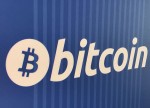
- All Instrument Types
- Indices
- Equities
- ETFs
- Funds
- Commodities
- Currencies
- Crypto
- Bonds
- Certificates
Please try another search

Taper, No Tantrum

The market's reaction to the FOMC statement was going according to our script, with the dollar backing off on a buy rumor sell the fact type of activity until Fed Chair Jerome Powell provided an end date for the tapering (mid-2022) before providing a start date (maybe next month). This spurred a dollar rally. Equities pulled back but recovered. The dollar was paring its gains today. It was lower against the other major currencies, but the yen, and the euro, which had fallen to $1.1685, was back above $1.1700 despite disappointing eurozone flash PMI.
Emerging market currencies were also higher as the outcome of the South African central bank, and Turkey central bank meetings were awaited. The Bank of England's announcement is expected shortly. The Swiss National Bank stood pat as widely expected, and Norway delivered the anticipated 25 bp rate hike, signaling another one is likely at the end of the year.
The US 10-year yield was up a few basis points near 1.34%, while European yields were 1-2 bp higher. Equities closed strong in the US, and the futures were pointing to a higher opening. Europe's Dow Jones Stoxx 600 (~+1%) was advancing for a third session and was poised to snap a three-week downdraft. Japan's markets were closed for a holiday, but most other markets in the region advanced, including notable Hong Kong's Hang Seng, led by a 4.6% rally in the real estate sector.
Gold initially extended its rally on the FOMC statement, but the hawkishness saw it reverse from $1787 to about $1765 and today found support near $1760. It was straddling little changed levels in Europe. Oil, driven by the seventh weekly drawdown of US oil inventories, which now stand at their lowest level in three years, pushed against $72 yesterday and was firm near $$72.50.
Iron ore prices in China and Singapore rallied. China's contract snapped an eight-session slide. Copper prices rallied 3% yesterday and were giving back a little more than a third of it today.
Asia Pacific
The Evergrande (OTC:EGRNY) saga continued to play out, and the anxiety seen Monday and claims of a "Lehman moment" have died down. A dollar payment was due today, and recall that there is a grace period. The direct contagion outside of China seemed limited, and many observers may have underestimated the "non-market" mechanisms that could be deployed. Moreover, with next week's holiday, PBOC officials have plenty of cover for additional injections of liquidity into the banking system.
Today's provision of CNY110 bln (~$17 bln) was the most since early this year. This was not a call that all is clear or that it is business as usual. There are likely to be medium and long-term implications, and the humbling of the property sector in China does not appear inconsistent with the broadening of the state's control and further subjugation of the private sector.
Separately, we note that China and Taiwan have both applied for membership in the CPTPP. Taiwan is a member of the WTO and APEC. Neither were poised for ascension any time soon. It does not appear to be a market factor yet.
Australia's preliminary PMI composite stabilized below the 50 boom/bust level. The September composite stands at 46.0, up from 43.3 in August, which could be the low point. It is the first gain since April and is the third month below 50. The manufacturing sector looked fine at 57.3, up from 52.0, and was at its best level since June. The lockdown has, as one would expect, crushed services. The PMI edged up to 44.9 from 42.9. There was no big implication. The Reserve Bank of Australia will lag behind the Reserve Bank of New Zealand in the rate hiking cycle. The Australian dollar was in the upper end of this week's range.
The dollar was in a quarter of a yen range above JPY109.75 today after posting an outside up day yesterday (trading on both sides of Tuesday's range and closed above Tuesday's high). The week's high is a little above JPY110.00, but it has not closed above it since Sept. 8. This week, the Australian dollar formed a base around $0.7220 and was trading near $0.7290 in Europe. Some demand may be related to today's expiration of a A$1 bln option at $0.7440 today. The next technical target is near $0.7315 and then $07345.
The Chinese yuan was strengthening for a second session. It had begun softer and recovered in full. The greenback pushed above CNY6.47 initially but was back near CNY6.4540. The PBOC set the dollar's reference rate at CNY6.4749, tight against expectations for CNY6.4745.
Europe
Although many jumped to the defense of the AUKUS announcement and justified it on all sorts of grounds, President Joseph Biden seemingly offered what was as close to a public apology for this sort of thing as imaginable. A statement issued after a conversation between the US and French presidents: "The two leaders agreed that the situation would have benefitted from open consultations among allies on matters of strategic interest to France and our European partners. President Biden conveyed his ongoing commitment in that regard."
This made things copasetic on the one hand. The French ambassador will be sent back to Washington. Next week's US-EU Trade and Technology Council in Pittsburgh will likely go forward. Yet, it put the US foreign policy on the other horn of the dilemma. It was not a purposeful slight of France or Europe. It was clumsy and ill-thought-out, which could be misconstrued as incompetence. It appeared that the slight to Europe was meant to overcome a slight to Australia.
After being engaged in the war in Afghanistan for the past two decades, Canberra apparently did not hear about the US withdrawal until it was on television and during the siege of Kabul. To make it up to him, nuclear-powered submarines were offered. As of Aug. 31, it appeared the French sub deal was still on. India is part of the Quad, and it has been seeking nuclear-powered submarines. It has been leasing Russian models because the US has refused, according to reports.
Europe's flash PMI disappointed. In the eurozone, the German and French preliminary readings were all below expectations. The slowdown in September was more pronounced than expected. The aggregate readings remained firm, and the expansion continued but at a less robust pace. EMU's manufacturing PMI fell to 58.7 from 61.4. The median forecast expected it to stay above 60. The service PMI fell to 56.3 from 59.0. It had been expected to slip to 58.5. This left the composite at 56.1, down from 59.0.
The UK's flash reading was also less strong than expected, and the manufacturing sector appeared harder hit. It fell to 56.3 from 60.3, while services slowed to 54.6 from 55.0. The composite stands at 54.1, down from 54.8.
The UK's PMI comes as the BOE deliberates. It is not expected to change its stance, though there may be a repeat of last month's dissent, which wanted to make a marginal reduction in Gilt purchases. The BOE hawkish rhetoric contributed to the market apparently pricing in two hikes next year, but Governor Bailey may push back against it.
The Swiss National Bank meeting concluded, and as expected, it stood pat. On the other hand, as widely anticipated, Norway's Norges Bank delivered the first-rate hike among the high-income countries and signaled another hike is likely at the end of the year. Among emerging markets, the South African central bank and Turkey's are expected shortly. The former is expected to stand pat, while later they may deliver a cut after the central bank shifted its focus from headline inflation to the core.
The euro recovered from about $1.1685 to test the $1.1735 area in the European morning. There are options for 3.9 bln euros struck at $1.17 that expire today. The intra-day technicals were stretched, and the $1.1750 area offered nearby resistance. Yesterday's outside down day did not bring follow-through selling today. However, a strong close today may give a sense that a base is being formed.
Sterling tested support near $1.36, where a GBP575 mln option will expire today. It needs to re-establish a foothold above $1.37 to lift the tone. The intraday momentum indicators were also stretched. Initial support may be seen near $1.3640. The euro punched through GBP0.8600 yesterday but again failed to close above it. Indeed, it has not settled above GBP0.8600 since July 20.
America
There are four important takeaways from the FOMC meeting. First, barring an unexpected shock, the Fed is likely to announce a moderation in the pace of bond purchases at the next FOMC meeting in early November. Second, the tapering, once begun, will finish around the middle of next year. This was the biggest surprise. The biggest surprise and the turn in the market's response came as Powell said that the tapering would finish mid-2022.
In effect, he provided an end date before fixing the start date (maybe next month). Three, more officials now see a hike in 2022 (nine compared with seven in June). In June, two officials thought two rate hikes would be needed next year, and now three do. Four, by our calculation, assuming that the effective Fed funds rate remains at 8 bp, then fair value, given a hike next December, is 23 bp, and that was where it settled on Tuesday.
In response to the FOMC, it rose three basis points and was up another basis point today (to imply 27 bp). The implied yield above 23 bp was the market pricing in the risk of a second hike next year, which the completion of the tapering around mid-year would allow for if needed (Q3 22 and Q4 22). That will be the next battlefield. For the record, making similar conservative assumptions, the effective average rate was unchanged. Fed hikes by 25 bp, fair value for the September 2022 Fed funds futures was 15.5 bp, and the contracted settle at 14 bp yesterday. It is now quoted at 14.5 bp.
The FOMC meeting seemed to cast a shadow over today's data, including the weekly initial jobless claims, the preliminary PMI, leading economic indicator, and the KC Fed manufacturing survey.
Canada reports July retail sales. A pullback after a 4.2% surge in June is expected. With rising equities and firm oil prices, the Canadian dollar can shrug off weak retail sales data. Mexico reports its bi-weekly reading of CPI. It is expected to creep up. While we lean against a Banxico rate hike next week, this is seemingly a minority view. Separately, Brazil's central bank delivered a 100 bp rate hike yesterday, as widely anticipated, and signaled another 100 bp hike next month. Tomorrow it reports September IPCA inflation, which is expected to approach 10%.
The panic attack on Monday drove the US dollar to almost CAD1.29. As the panic subsided, the US dollar surrendered its gains. It set the week's low in Europe near CAD1.2650. A break of CAD1.2600 would boost the chances that a durable high was in place and possibly setting up a test on the CAD1.2525 area next week. Take directional cues from the US stock market.
The greenback peaked on Monday near MXN20.20 and fell to MXN19.9370 yesterday before rebounding back above MXN20.00. It was trading inside yesterday's range but with a downside bias. However, as we have observed with other pairs, the greenback's fall today seemed stretched ahead of the US open. Therefore, caution is in order for short-term participants.
Related Articles

The BOJ’s policy shift continues to strengthen the yen, keeping USD/JPY under pressure. Rising Japanese bond yields signal further tightening ahead, reinforcing the bearish...

U.S. economic growth fears mount as data disappoints, weighing on USD European data surprises fuel optimism, boosting EUR/USD Bond markets signal diverging growth outlooks for...

CHF/JPY Forex Strategy is Bearish: We are currently @ 166.78 in a range. If we can break slope support, we are looking for a continuation to the ATR target @ 165.97 area, with a...
Are you sure you want to block %USER_NAME%?
By doing so, you and %USER_NAME% will not be able to see any of each other's Investing.com's posts.
%USER_NAME% was successfully added to your Block List
Since you’ve just unblocked this person, you must wait 48 hours before renewing the block.
I feel that this comment is:
Thank You!
Your report has been sent to our moderators for review




Add a Comment
We encourage you to use comments to engage with other users, share your perspective and ask questions of authors and each other. However, in order to maintain the high level of discourse we’ve all come to value and expect, please keep the following criteria in mind:
Enrich the conversation, don’t trash it.
Stay focused and on track. Only post material that’s relevant to the topic being discussed.
Be respectful. Even negative opinions can be framed positively and diplomatically. Avoid profanity, slander or personal attacks directed at an author or another user. Racism, sexism and other forms of discrimination will not be tolerated.
Perpetrators of spam or abuse will be deleted from the site and prohibited from future registration at Investing.com’s discretion.